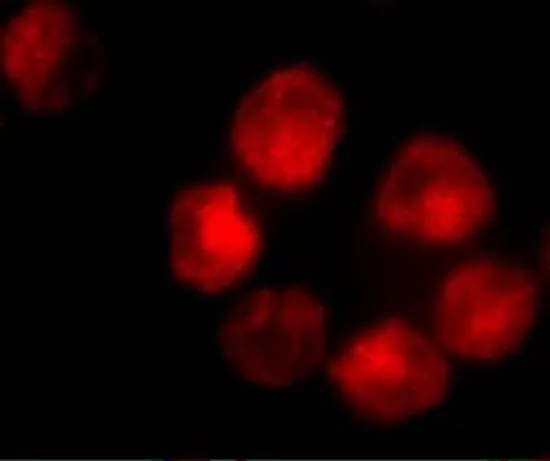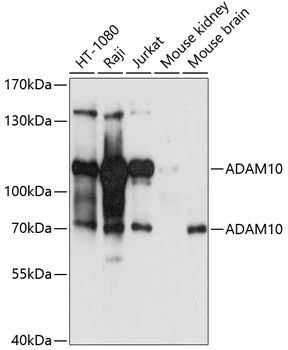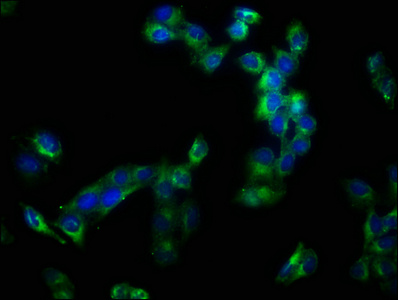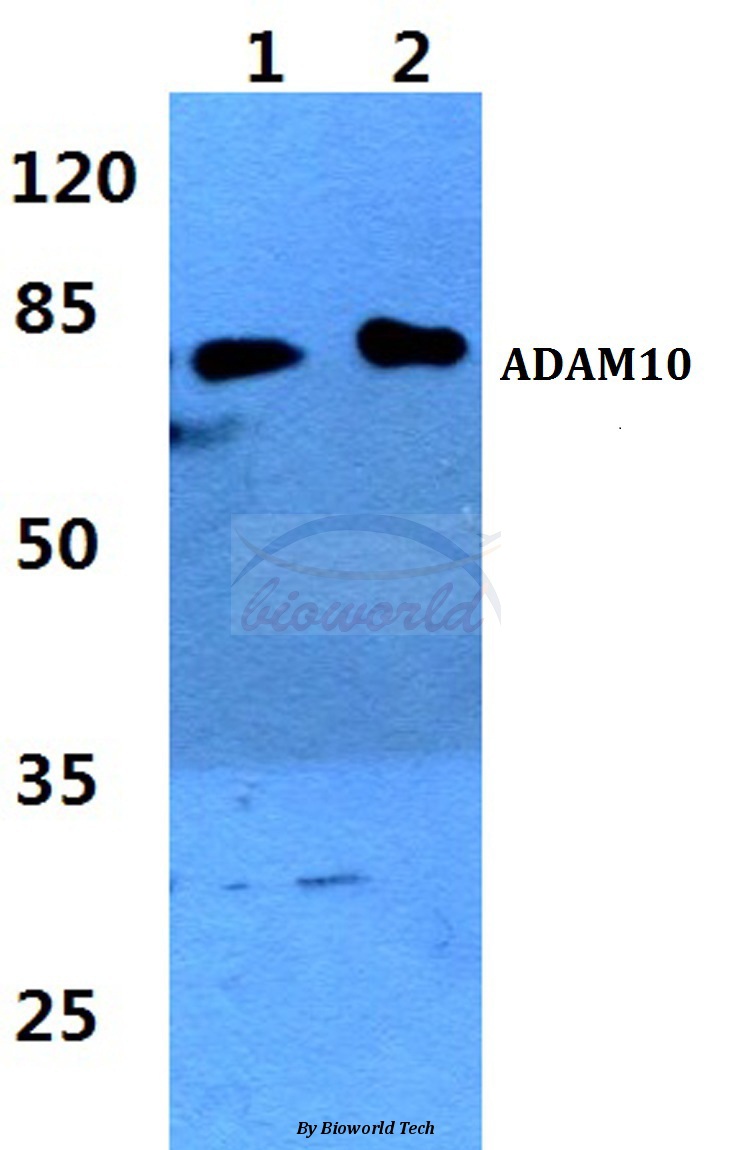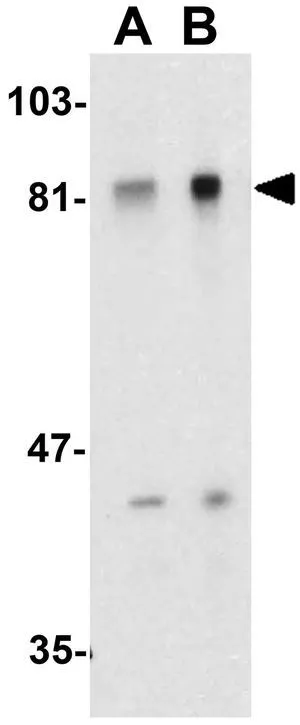
WB analysis of Jurkat cell lysate using GTX21997 ADAM10 antibody. Working concentration : (A) 1 and (B) 2 microg/ml
ADAM10 antibody
GTX21997
ApplicationsImmunoFluorescence, Western Blot, ELISA, ImmunoCytoChemistry
Product group Antibodies
TargetADAM10
Overview
- SupplierGeneTex
- Product NameADAM10 antibody
- Delivery Days Customer9
- Application Supplier NoteWB: 1 - 2 microg/mL. ICC/IF: 2-10 microg/mL. *Optimal dilutions/concentrations should be determined by the researcher.Not tested in other applications.
- ApplicationsImmunoFluorescence, Western Blot, ELISA, ImmunoCytoChemistry
- CertificationResearch Use Only
- ClonalityPolyclonal
- Concentration1 mg/ml
- ConjugateUnconjugated
- Gene ID102
- Target nameADAM10
- Target descriptionADAM metallopeptidase domain 10
- Target synonymsAD10, AD18, CD156c, CDw156, HsT18717, MADM, RAK, kuz, disintegrin and metalloproteinase domain-containing protein 10, a disintegrin and metalloprotease domain 10, kuzbanian protein homolog, mammalian disintegrin-metalloprotease
- HostRabbit
- IsotypeIgG
- Protein IDO14672
- Protein NameDisintegrin and metalloproteinase domain-containing protein 10
- Scientific DescriptionProinflammatory cytokine tumor necrosis factor-a (TNF-a)contributes to a variety of inflammatory responses and programmed cell death. Notch receptor and its ligand participate in cell fate decisions during vertebrate development and are associated with several human disorders, including a T-cell lymphoma. TNF-a, notch and its ligand delta are all membrane-bond molecules, which are cleaved by proteases to release mature proteins or functional receptor. ADAM10, a metalloprotease-disintegrin in the family of mammalian ADAM (for a disintegrin and metalloprotease), was recently identified to cleave TNF-a, notch and its ligand delta (1-3). The genes encoding human, mouse, and bovine ADAM10 were recently cloned and designated ADAM 10, kuzbanian (KUZ), and MADM, Respectively, (1,2,4). ADAM10 mRNA is expressed in a variety of human and bovine tissues (1,4).
- Storage Instruction-20°C or -80°C,2°C to 8°C
- UNSPSC12352203

